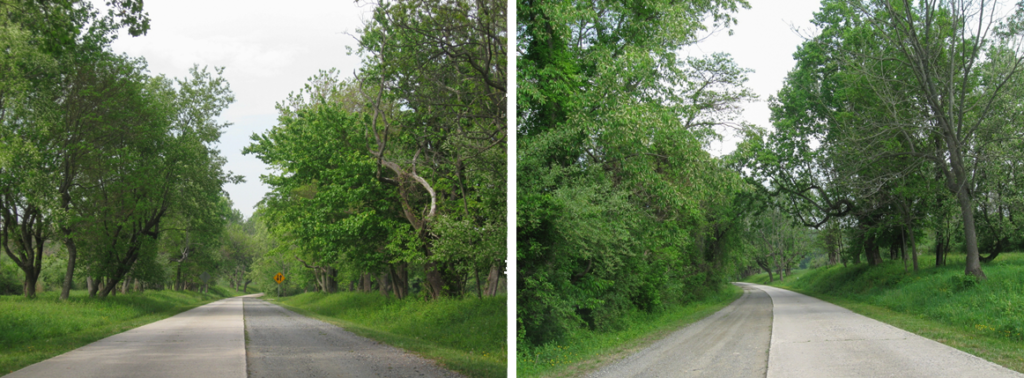NINE FEET
A while back we were traveling to New Process Fiber in Greenwood DE researching the vulcanized fibre industry in Delaware. New Process originally made their own fibre and later moved to purchasing vulcanized fibre from NVF until the great flood of 2003 when New Fiber started purchasing fibre from Japan. New Process and Wilmington Fibre are two businesses that remain in DE converting large sheets of raw vulcanized fibre into all sorts of finished products such as bushings, washers, and electrical insulating materials. As we traveled south of Harrington on Route 13 to Greenwood to visit New Process Fiber, we passed the intersection for Nine Foot Road.
It turns out this is the only remaining, officially named, ‘Nine Foot Road’ in Delaware, although a former Nine-Foot Road is now a trail in White Clay State Park. Delaware had a number of roads referred to as ‘nine-foot road’ at the dawn of the automotive age. What is the significance of the or a ‘Nine-Foot Road”? (Hint: it is both a name and a construction.)
Answer
Before the arrival of the Europeans to begin settling North America, the Native Indians relied on foot and horse paths and trails between locations. As settlers arrived and constructed wagons, these trails became enlarged to form the start of a primitive roadway system in the New World. In time, Delaware was crisscrossed with dirt roads suited for wagon and carriage. Some of the heavier traveled ones were covered with crushed stone so a not to become so muddy in wet weather. With the development of the motorcarriage in the late 1800s and into the early 1900s, the country recognized the paving of these often-muddy roads was a necessity. In 1915 Delaware began to pave the most heavily traveled dirt roads. Paving was not only needed to make automobile travel more pleasant, other benefits existed. A truck might only haul 1-ton on a dirt road whereas 2.5 to 3 tons could be hauled by the same truck on a paved road.
A road described as ‘paved’ was generally constructed of bricks. A sand base was laid followed by crushed stone upon which the large bricks were placed. The construction of the Dixie Highway, a nine-foot road constructed in 1918 between Chicago and Miami, was largely constructed of brick. The Lincoln Highway that crossed North America is another example of a nine-foot road with sections originally constructed of brick.
Unfortunately, paved roads, either of brick or later macadam (asphalt or blacktop) or concrete did not hold up to steel tires on wooden wagon wheels. Horses and mules often had problems with their horseshoes getting traction on a paved surface. The rivets holding steel tires to wooden wagon wheels, and horseshoe cleats formed on the underside of horseshoes both were ground down exceptionally fast on a paved road not to mention further damage that they created with a paved road’s surface by chipping away at it.
Delaware, along with many states employed the ‘Nine Foot Road’ as the solution! In reality these roads were 18’ feet wide with 9’ of width paved and the adjacent 9’ of width left as a dirt road. Rubber tired vehicles could travel the paved section of the road while farmers and others still relying on pure horsepower with a wagon could use the dirt portion of the road. Because traffic was light and still slow moving back at the start of the 1900s, when drivers going in opposing directions met, they simply moved to the right or left as appropriate to pass each other.
Pictured below are two sections of the restored Nine Foot Road located within White Clay Creek State Park taken by Matthew Aungst. Next time you’re using Google, Bing, or another internet search product, search for ‘nine-foot road’ and you’ll find more of them in North Carolina, New York, and other states.

